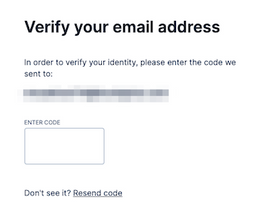Understanding End-to-End Medical Billing: A Comprehensive Guide

In today’s healthcare landscape, the financial aspect is as crucial as the medical one. End-to-end medical billing plays a pivotal role in ensuring that healthcare providers are compensated for their services promptly and accurately. This blog explores what end-to-end medical billing entails, its benefits, and how healthcare organizations can optimize this process.
What is End-to-End Medical Billing?
End-to-end medical billing refers to the complete process of handling medical billing from the initial patient registration to the final payment collection. This comprehensive approach ensures that every step of the billing cycle is managed effectively to maximize revenue and reduce the risk of errors.
Key Components of End-to-End Medical Billing
- Patient Registration
The journey begins with patient registration, where demographic and insurance information is collected. Accurate data entry at this stage is crucial for avoiding delays in the billing process. - Insurance Verification
Once registered, the patient’s insurance coverage is verified. This step is essential to ensure that the services provided are covered, preventing potential claim denials later. - Charge Capture
Charge capture involves documenting all the services rendered during the patient visit. This includes procedures, tests, and consultations, ensuring that nothing is missed that could lead to lost revenue. - Claim Submission
After charges are captured, claims are generated and submitted to insurance payers. This step requires a thorough understanding of coding and billing guidelines to minimize the chances of errors. - Payment Posting
Once the claim is processed, payments are posted to the patient’s account. This includes payments from insurance providers and any patient copayments or deductibles. - Accounts Receivable Follow-Up
Monitoring accounts receivable is vital. This involves following up on unpaid claims, appealing denied claims, and ensuring that the healthcare provider receives all due payments. - Patient Billing
After insurance payments are posted, any outstanding balances are billed to patients. Clear communication and transparency during this process can improve patient satisfaction and prompt payment. - Reporting and Analysis
Regular reporting on billing activities helps identify trends, monitor key performance indicators (KPIs), and improve overall efficiency. Analyzing this data can help in making informed decisions for future billing strategies.
Benefits of End-to-End Medical Billing
Implementing an end-to-end medical billing process offers numerous benefits to healthcare organizations:
- Improved Revenue Cycle Management
By streamlining the billing process, healthcare providers can enhance their revenue cycle management. This results in quicker payments and reduced days in accounts receivable. - Reduced Errors and Denials
A thorough billing process minimizes the chances of errors and claim denials, ensuring that claims are submitted correctly the first time. - Enhanced Patient Experience
Efficient billing practices lead to clearer communication with patients regarding their financial responsibilities, improving their overall experience. - Time and Cost Savings
Automating and optimizing the billing process saves time for staff, allowing them to focus on patient care rather than administrative tasks. This can also lead to significant cost savings in the long run. - Better Compliance
An end-to-end approach ensures adherence to billing regulations and compliance standards, reducing the risk of audits and penalties.
How to Optimize End-to-End Medical Billing
- Invest in Technology
Utilizing advanced medical billing software can automate many tasks within the billing cycle, improving accuracy and efficiency. - Train Staff
Regular training and updates for billing staff on coding changes and compliance requirements are essential for minimizing errors and ensuring that everyone is up-to-date. - Focus on Communication
Maintaining clear communication with patients regarding their financial obligations and billing questions can foster a positive relationship and prompt payments. - Monitor KPIs
Regularly tracking key performance indicators, such as claim denial rates and average days in accounts receivable, can help identify areas for improvement. - Outsource When Necessary
If your organization struggles with managing the billing process effectively, consider outsourcing to a specialized medical billing company. This can help you focus on patient care while ensuring your billing is in expert hands.
Conclusion
End-to-end medical billing is a critical component of healthcare management, impacting both financial performance and patient satisfaction. By understanding the various stages of the billing process and implementing best practices, healthcare providers can optimize their revenue cycle, reduce errors, and enhance the overall patient experience. As the healthcare landscape continues to evolve, investing in efficient billing processes will be essential for success.









